This weekend's baking included Bernard Claytons Pain Allemande aux Fruits. It's a marvelously fragrant bread, containing lemon zest, orange juice, anise seed, cinnamon, figs, raisins, apricots, prunes, almonds, hazelnuts, butter and other good things. I made a double batch, since I tend to make a mess in the process of getting everything prepped. Might as well have four loaves for my efforts as two, right? Plus, I can give some for gifts and still have some for myself.
It is delightful with just a smear of butter, or toasted. For me, it has the appeal of fruit and spice, without the cloying flavor or overwhelming sweetness of most fruitcakes.
Here's the dough at the end of the bulk rise, just about to make a break for freedom:
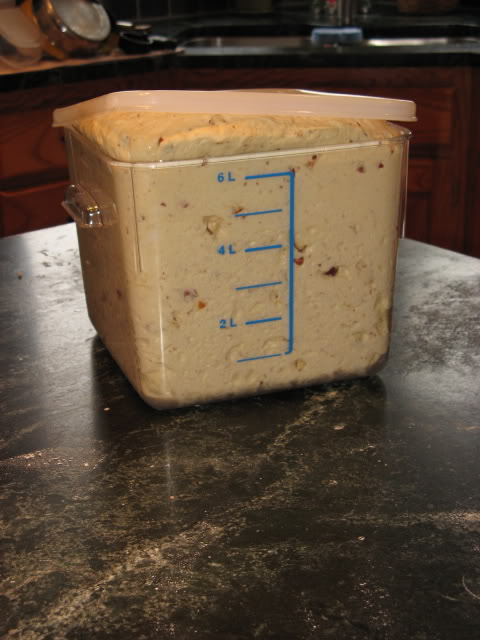
The fruit mixture: figs, apricots, raisins and prunes:
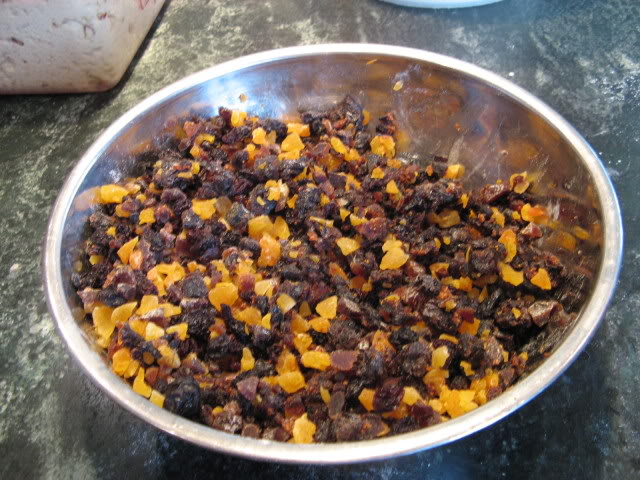
This shows the dough with the first one-third of the fruit, ready incorporation:
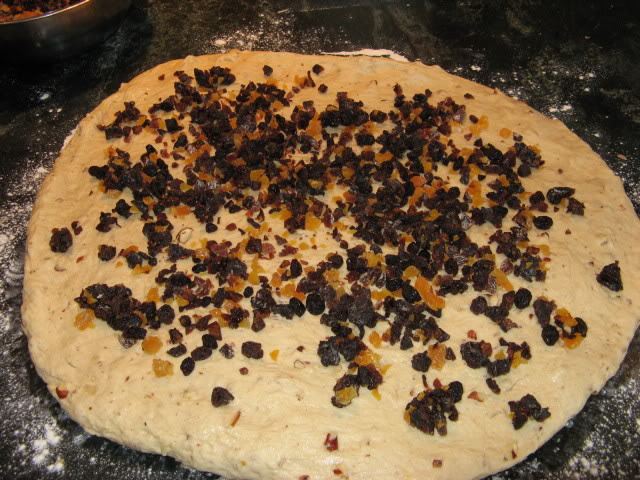
Fruit mixed in, dough shaped and panned:
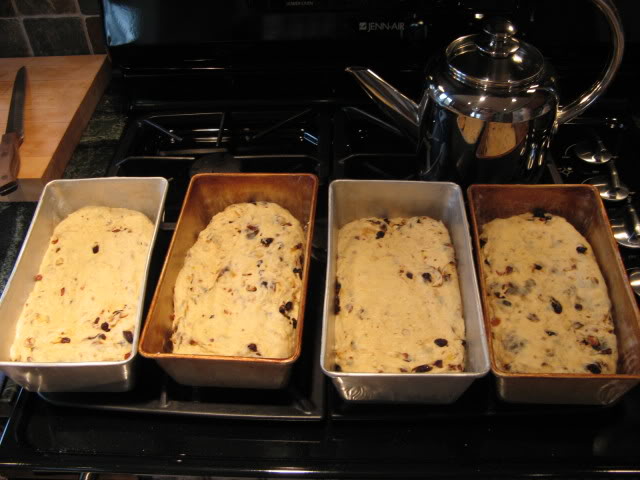
Second rise complete and ready for the oven:
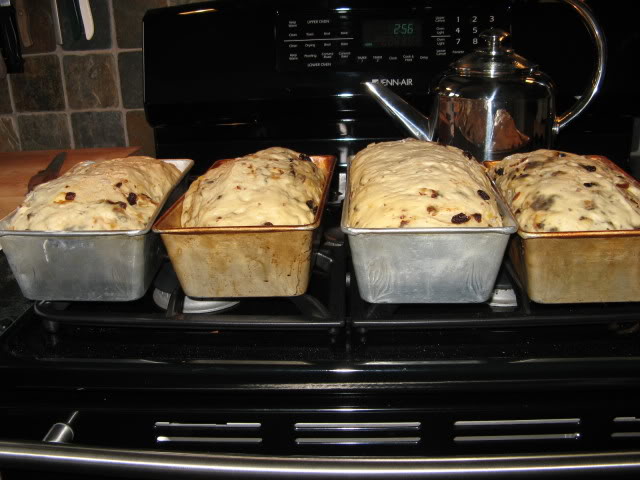
And the finished bread:
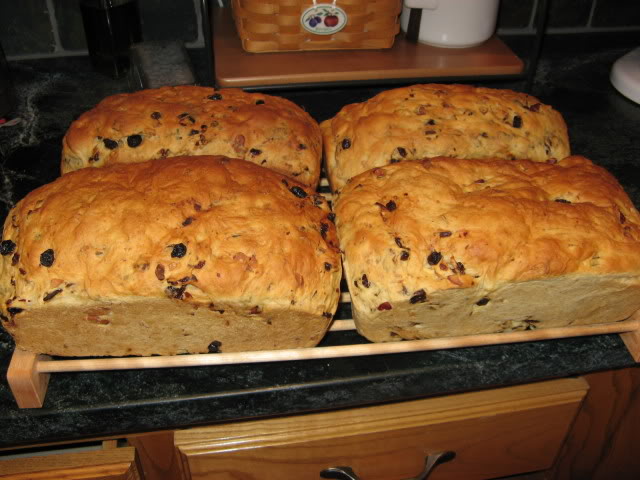
Oh, and I baked off Leader's pain de campagne that was begun last evening:
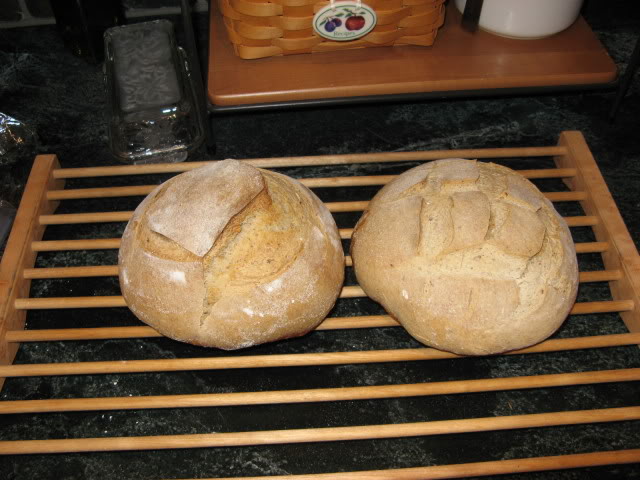
Not a bad day in the kitchen!